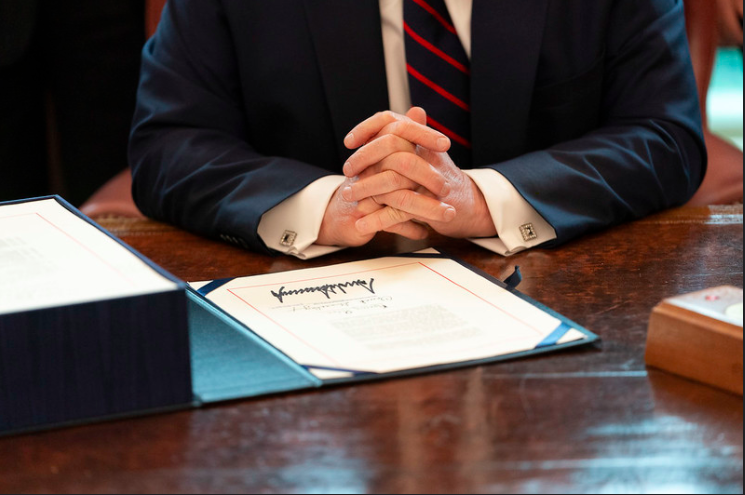Regional Views on Trump Mostly Mirror Coronavirus Reaction Across the U.S.

Americans display some notable differences based on geography in their views toward President Donald Trump. Americans living in the Pacific Coast states [1] stand out as much less likely to view Trump favorably (33%) than people living in most other areas, including those in the mid-Atlantic region (50%),[2] the Southeastern Coast (49%)[3], and those in the northern Midwest (47%)[4]. The Pacific Coast region is the only geographic area where residents’ views on Trump did not change between February and March (33% for both). In every other major area, most notably in the mid-Atlantic (35% to 49%) and the Southeastern Coast (41% to 49%), Trump saw a marked increase in his favorability perhaps due to a “rally around the flag” effect in response to the coronavirus pandemic.
When asked about certain activities they plan to avoid in response to the novel coronavirus — such as taking public transportation, going to a restaurant or bar, and getting on an airplane — Americans respond similarly across the country with only slight variations. A slim majority (51%) of Pacific Coast state residents say they plan to avoid all eight activities they were asked about, while less than half of northern Midwest (48%), mid-Atlantic (44%), and Southeastern Coast (43%) residents agree, though the difference is not statistically significant. Americans across regional divisions do not display notable differences in their likelihood to avoid certain activities due to coronavirus.
Pacific Coast residents’ unchanging views on Trump stand out next to the other geographic areas, and far fewer self-identified Republicans live in this area than in other regions. Less than one in five (19%) Pacific Coast state residents, compared to about 3 in 10 Southeastern coast (30%), mid-Atlantic (28%), and northern Midwest (28%) residents, identify as Republican. Washington state was also the initial outbreak site for the coronavirus, which might have shaped views on Trump and his initial response to the virus. When this survey began on March 17, Washington accounted for 17% of all confirmed cases of coronavirus in the United States.[5]
[1]The Pacific coast states are Alaska, California, Hawaii, Oregon, and Washington. This corresponds with the Pacific Census division.
[2]The mid-Atlantic states are New Jersey, New York, and Pennsylvania. This corresponds with the Mid Atlantic Census division.
[3]The Southeastern coast includes the District of Columbia, Delaware, Florida, Georgia, Maryland, North Carolina, South Carolina, Virginia, and West Virginia. This corresponds with the South Atlantic Census division.
[4]Northern Midwest states are Illinois, Indiana, Michigan, Ohio, and Wisconsin. This corresponds with the East North Central Census division.
[5]https://www.cdc.gov/coronavirus/2019-ncov/cases-updates/cases-in-us.html. https://www.doh.wa.gov/emergencies/coronavirus. On March 17, there were 1,208 confirmed cases in Washington and 33,404 cases in the United States.

